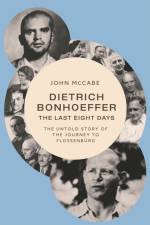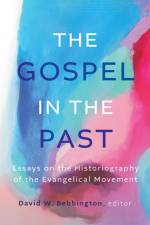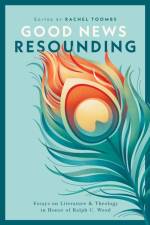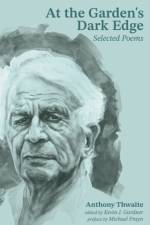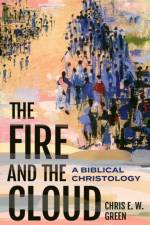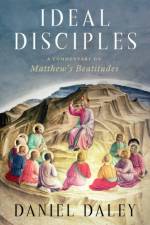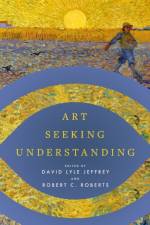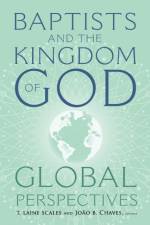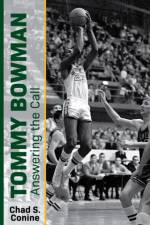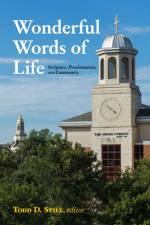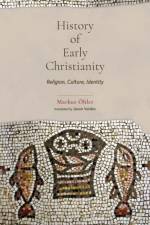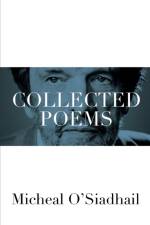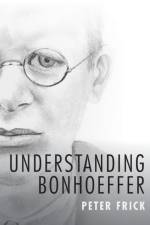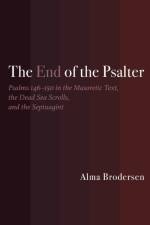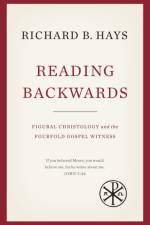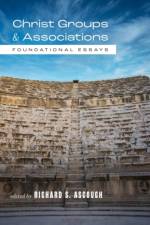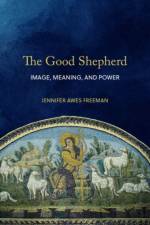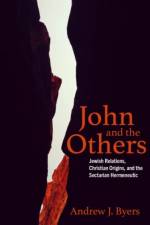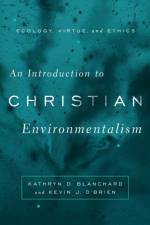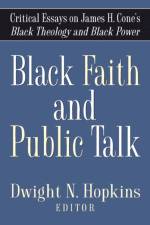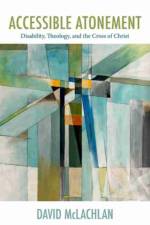Bøger udgivet af Baylor University Press
-
429,95 kr. - Bog
- 429,95 kr.
-
604,95 kr. From the dawn of their movement in the eighteenth century, evangelicals composed narratives of the revivals that were drawing in large numbers of new converts. As evangelicals continued to write about the achievements of their heroes at home and abroad, tensions between their theological purposes and the historical nature of their writings began to emerge, particularly as history developed into a professional academic discipline. Words praising the Lord's doings in the past might seem out of place in scholarly discourse. Non-evangelicals, recognizing the importance of the movement, added to the problem by discussing it without reference to divine involvement. Theology and history found themselves opposed to one another in accounts of the evangelical past. Was the evangelical movement to be seen as an expression of divine activity or of human culture? If it was to be seen as both, how was its Christian content related to its contexts? The Gospel in the Past brings together eleven scholars of evangelical theology and history seeking to answer questions such as these within evangelical historiography. Part 1 focuses on the historiography of selected evangelical themes and topics, such as eschatology, evangelical women, and responses to C. S. Lewis. Part 2 focuses on evangelical historiography within particular countries, such as Wales and Australia, and within particular denominations, such as Anglicanism.Each of the essays touches to a greater or lesser extent on the contrast between traditional evangelical approaches to history and more recent ones shaped by the expectations of the academy. Engaging both sides of this lively divide, The Gospel in the Past is an accessible guide to the historiography of the evangelical movement with a focus on analyzing and beginning to resolve some of the tensions within the discipline.
- Bog
- 604,95 kr.
-
604,95 kr. Ralph C. Wood's teaching and writing career over fifty years helped readers and students be attentive to the way literature renders the theologically abstract concretely. Wood has modeled serious theological engagement and robust literary reflection in his writing on G. K. Chesterton, J. R. R. Tolkien, and Flannery O'Connor, among others. His books have shaped current and future generations of literary critics and theologians alike. Not as easily measured, Wood formed generations of undergraduate and graduate students in candid, sometimes brash, often comedic, and always critical engagements with theology and the arts. Avoiding what Flannery O'Connor deemed the two great follies of theologically oriented literature in the forms of pornography and sentimentality, Wood drew out theological themes without watering down the reality of suffering or the costly nature of the gospel. Good News Resounding honors Wood's contribution by continuing to follow in his footsteps, reflecting theologically on literature to draw out the very Good News of the gospel amidst very real suffering, evil, and sin. The collection assembles a diverse group of scholars--former students, colleagues, and friends of Wood--to demonstrate the multivalent approaches to and richness of reading literature theologically. Written for academically inclined readers of theology and the arts, Good News Resounding extends Wood's legacy and testifies to the power of the classroom to shape future generations of readers, theologians, and Christians.
- Bog
- 604,95 kr.
-
522,95 kr. From the dawn of their movement in the eighteenth century, evangelicals composed narratives of the revivals that were drawing in large numbers of new converts. As evangelicals continued to write about the achievements of their heroes at home and abroad, tensions between their theological purposes and the historical nature of their writings began to emerge, particularly as history developed into a professional academic discipline. Words praising the Lord's doings in the past might seem out of place in scholarly discourse. Non-evangelicals, recognizing the importance of the movement, added to the problem by discussing it without reference to divine involvement. Theology and history found themselves opposed to one another in accounts of the evangelical past. Was the evangelical movement to be seen as an expression of divine activity or of human culture? If it was to be seen as both, how was its Christian content related to its contexts? The Gospel in the Past brings together eleven scholars of evangelical theology and history seeking to answer questions such as these within evangelical historiography. Part 1 focuses on the historiography of selected evangelical themes and topics, such as eschatology, evangelical women, and responses to C. S. Lewis. Part 2 focuses on evangelical historiography within particular countries, such as Wales and Australia, and within particular denominations, such as Anglicanism.Each of the essays touches to a greater or lesser extent on the contrast between traditional evangelical approaches to history and more recent ones shaped by the expectations of the academy. Engaging both sides of this lively divide, The Gospel in the Past is an accessible guide to the historiography of the evangelical movement with a focus on analyzing and beginning to resolve some of the tensions within the discipline.
- Bog
- 522,95 kr.
-
242,95 kr. Anthony Thwaite (1930-2021) was one of the most formidable voices in postwar English letters. Deeply esteemed by fellow poets and critics for his original and technically controlled poetry, Thwaite composed in traditional forms, with orderly stanzas, rhyme schemes, and metrical lines that scan. His voice was highly personal, cautiously intimate, and often witty, and he wrote with a gratifying clarity and freedom from abstraction, making him among the most accessible of modern poets. At the Garden's Dark Edge is a collection of a hundred of Thwaite's poems, selected from a span of more than sixty years, exploring his major themes and recurring topics--among them, the consolations of domestic life, the pleasures of language and creativity, and the many humans and other animals in his life. He was inspired by travel and life abroad--most notably Libya, Japan, and the American South--and his poems deeply engage the individuals and cultures he encountered. A lifelong archaeologist, Thwaite also explored the ruins of the past and what we may recover by exploring it. Intriguingly, his work also faces life's most vexing questions from the perspective of a serious Christian faith.This volume contains several poems that have never been reprinted or collected, and one that has never before been published. By making his work more accessible than ever before, At the Garden's Dark Edge aims to introduce Anthony Thwaite to a new generation of readers and preserve his legacy for future generations. A preface by playwright and novelist Michael Frayn accompanies an editor's introduction.
- Bog
- 242,95 kr.
-
564,95 kr. - Bog
- 564,95 kr.
-
435,95 kr. - Bog
- 435,95 kr.
-
588,95 kr. - Bog
- 588,95 kr.
-
823,95 kr. - Bog
- 823,95 kr.
-
217,95 kr. - Bog
- 217,95 kr.
-
278,95 kr. Peplete with images, this volume contains ten sermons preached by Truett Seminary faculty and staff on biblical passages explicitly cited or referenced at the school's Baugh-Reynolds campus in Waco, Texas. These messages illustrate how 'the Word' can be skillfully employed to punctuate and animate a community's life together.
- Bog
- 278,95 kr.
-
493,95 kr. "Describes the history of Early Christianity from Jesus of Nazareth to the time of the Second Judean Revolt, presenting the developments of early Christianity in antiquity, drawing on both ancient Judaism and the Greco-Roman world as contexts"--
- Bog
- 493,95 kr.
-
848,95 - 984,96 kr. - Bog
- 848,95 kr.
-
568,95 kr. - Bog
- 568,95 kr.
-
568,95 kr. - Bog
- 568,95 kr.
-
568,95 kr. - Bog
- 568,95 kr.
-
613,95 kr. - Bog
- 613,95 kr.
-
421,95 kr. - Bog
- 421,95 kr.
-
679,95 kr. - Bog
- 679,95 kr.
-
588,95 kr. - Bog
- 588,95 kr.
-
713,95 kr. From the early days of the Christian faith, the relationship between the twin realities of Jesus' historical particularity and universal presence has been a theological puzzle. The apparent dichotomy of the two leads Christ-followers to ponder some difficult questions: Who is Jesus to those who do not know him? Who are those who do not know him to those who do? Do "e;we"e; who follow Jesus meet him in "e;those"e; who do not?Contemporary debates concerning Christian theology of religions have been profoundly shaped by Alan Race's threefold typology of exclusivism, inclusivism, and pluralism. Scholars increasingly recognize the insufficiency of this typology, and a consensus about how to replace it remains elusive. With The Unique and Universal Christ, Drew Collins argues that an alternative theological approach to the relation between the uniqueness of Jesus Christ and the universality of God's presence can be gleaned from the theology of Hans Frei and his fivefold typology of Christian theology. With Frei's model as an interpretive lens, Collins examines the various ecumenical movements of the twentieth century and their conversations around theological authority in connection to Christianity's relationship with other faith traditions. A new paradigm emerges for conceptualizing Christian faith amid the rich diversity of our world. Reconsidered in this light, the Christian theology of religions ceases to be a combative venture that pits a Christian faith committed to the scandalous particularity of Jesus Christ's identity as the Son of God against a faith open to the possibility of encountering the divine presence in the world at large. Instead, it becomes a mode of exploration, hoping for such encounters with the universal presence of Christ because of the uniqueness of Jesus.
- Bog
- 713,95 kr.
-
- Image, Meaning, and Power
593,95 kr. Traces the visual and textual depictions of the Good Shepherd motif from its early iterations as a potent symbol of kingship, through its reimagining in biblical figures, such as the shepherd-king David, and onward to the shepherds of Greco-Roman literature.
- Bog
- 593,95 kr.
-
533,95 kr. The Johannine literature has inspired the Church's christological creeds, prompted its Trinitarian formulations, and resourced its ecumenical and social movements. However, while confessional readers find in these texts a divine love for "e;the world,"e; biblical scholars often detect a dangerous program of harsh polemics arrayed against "e;the other."e; In this frame, the Johannine writings are products of an anti-society with its own anti-language articulating a worldview that is anti-ecclesiastical, anti-hierarchical, and, more seriously, anti-Jewish and even anti-Semitic. In New Testament studies, the prefix "e;anti-"e; has become almost Johannine. In John and the Others, Andrew Byers challenges the "e;sectarian hermeneutic"e; that has shaped much of the interpretation of the Gospel and Letters of John. Rather than "e;anti-Jewish,"e; we should understand John as opposed to the exclusionary positioning of ethnicity as a soteriological category. Neither is this stream of early Christianity antagonistic towards the wider Christian movement. The Fourth Evangelist openly situates his work in a crowded field of alternative narratives about Jesus without seeking to supplant prior works. Though John is often regarded as a "e;low-church"e; theologian, Byers shows that the episcopal ecclesiology of Ignatius of Antioch is compatible with Johannine theology. John does not locate revelation solely within the personal authority of each believer under the power of the Spirit, and so does not undercut hierarchical leadership. Byers demonstrates that the "e;Other Disciple"e; is actually a salutary resource for a contemporary world steeped in the negative discourse of othering. Though John's social vision entails othering, the negative "e;other"e; in John is ultimately cosmic evil, and his theological convictions are grounded in the most sweeping act of "e;de-othering"e; in history, when the divine Other "e;became flesh and dwelled among us."e; This early Christian tradition certainly erected boundaries, but all Johannine walls have a "e;Gate"e;-Jesus, the Lamb of God slain for the sin of the world that God loves.
- Bog
- 533,95 kr.
-
327,95 kr. Persecution of Christians in the Middle East has been a recurring theme since the middle of the nineteenth century. The topic has experienced a resurgence in the last few years, especially during the Trump era. Middle Eastern Christians are often portrayed as a homogeneous, helpless group ever at the mercy of their Muslim enemies, a situation that only Western powers can remedy. The Politics of Persecution revisits this narrative with a critical eye.Mitri Raheb charts the plight of Christians in the Middle East from the invasion of Napoleon Bonaparte in 1799 to the so-called Arab Spring. The book analyzes the diverse socioeconomic and political factors that led to the diminishing role and numbers of Christians in Palestine, Egypt, Syria, Lebanon, and Jordan during the eras of Ottoman, French, and British Empires, through the eras of independence, Pan-Arabism, and Pan-Islamism, and into the current era of American empire. With an incisive expose of the politics that lie behind alleged concerns for these persecuted Christians-and how the concept of persecution has been a tool of public diplomacy and international politics-Raheb reveals that Middle Eastern Christians have been repeatedly sacrificed on the altar of Western national interests. The West has been part of the problem for Middle Eastern Christianity and not part of the solution, from the massacre on Mount Lebanon to the rise of ISIS. The Politics of Persecution, written by a well-known Palestinian Christian theologian, provides an insider perspective on this contested region. Middle Eastern Christians survived successive empires by developing great elasticity in adjusting to changing contexts; they learned how to survive atrocities and how to resist creatively while maintaining a dynamic identity. In this light, Raheb casts the history of Middle Eastern Christians not so much as one of persecution but as one of resilience.
- Bog
- 327,95 kr.
-
- Ecology, Virtue, and Ethics
713,95 kr. Examines seven contemporary environmental challenges through the lens of classical Christian virtues. Authors Kathryn Blanchard and Kevin O'Brien use these classical Christian virtues to seek a "golden mean" between extreme positions by pairing each virtue with a pernicious environmental problem.
- Bog
- 713,95 kr.
-
- Critical Essays on James H. Cone's Black Theology and Black Power
588,95 kr. When Cone wrote Black Theology and Black Power, he liberated the Gospel of Christ from its institutionalized forms. This book continues Cone's theme of power in the public realm and examines the economic, political, cultural, gender, and theological implications of black faith and black theology.
- Bog
- 588,95 kr.
-
533,95 kr. The atonement-where God in Jesus Christ addresses sin and the whole of the human predicament-lies at the heart of the Christian faith and life. Its saving power is for all people, and yet a deep hesitancy has prevented meaningful discussion of the cross' relevance for people with disabilities. Speaking of disability and the multifaceted concept of the atonement has created an unresolvable tension, not least because sin and disability often seem to be associated within the biblical text. While work in disability theology has made great progress in developing a positive theological framework for disability as an integral part of human diversity, it has so far fallen short of grappling with this particular set of interpretive challenges presented by the cross.In Accessible Atonement, reflecting on his experience as both a pastor and a theologian, David McLachlan brings the themes and objectives of disability theology into close conversation with traditional ideas of the cross as Jesus' sacrifice, justice, and victory. From this conversation emerges an account of the atonement as God's deepest, once-for-all participation in both the moral and contingent risk of creation, where all that alienates us from God and each other is addressed. Such an atonement is inherently inclusive of all people and is not one that is extended to disability as a "e;special case."e; This approach to the atonement opens up space to address both the redemption of sin and the possibilities of spiritual and bodily healing.What McLachlan leads us to discover is that, when revisited in this way, the cross-perhaps surprisingly-becomes the cornerstone of Christian disability theology and the foundation of many of its arguments. Far from excluding those who find themselves physically or mentally outside of assumed "e;norms,"e; the atoning death of Christ creates a vital space of inclusion and affirmation for such persons within the life of the church.
- Bog
- 533,95 kr.

